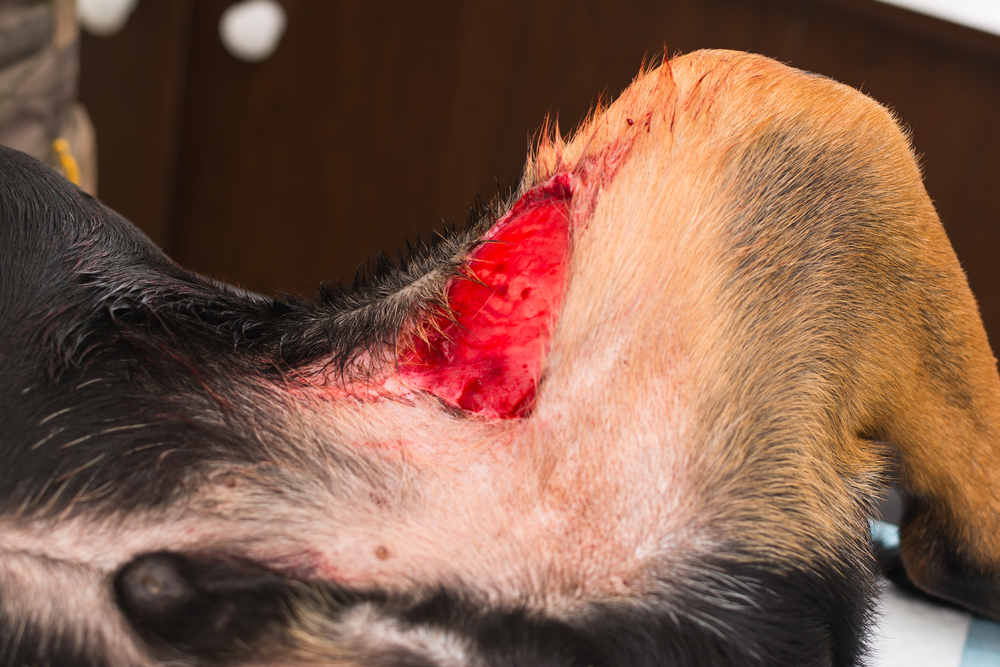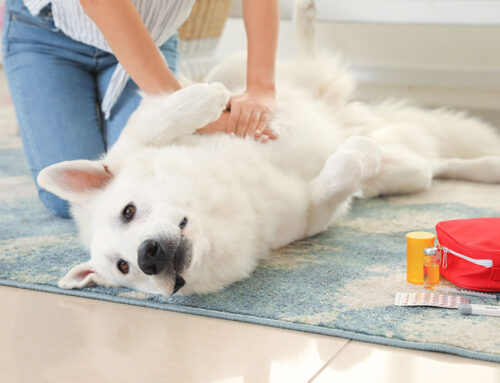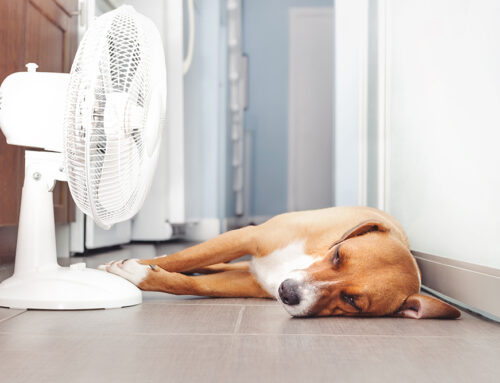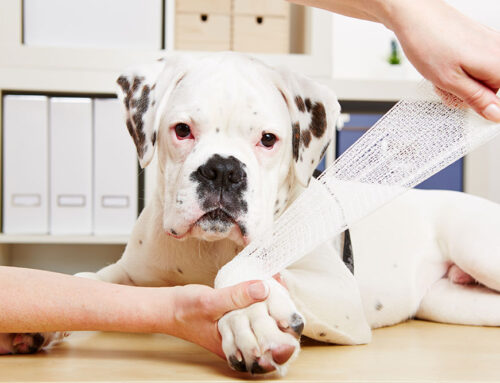After the Impact: What to Do if Your Pet Is Hit by a Car
It’s every pet owner’s nightmare- your pet darts out the door and into the street, or pulls the leash out of your hand when chasing a squirrel, resulting in a sudden accident on the road. Even if your pet seems fine afterward, internal injuries can appear hours later and are life-threatening. Staying calm, securing your pet safely, and getting immediate veterinary care are critical steps in giving them the best chance at recovery.
At Alpine Animal Hospital, we understand that emergencies don’t wait for convenient hours. That’s why our team provides comprehensive urgent care and 24/7 after-hours emergency services for dogs, cats, horses, and exotic animals. When seconds count, we’re here to help.
Why Pets Seem Fine After Trauma- But Aren’t
In the moments following a traumatic accident, your pet’s body floods with stress hormones like adrenaline and cortisol. These chemicals serve a protective purpose: they increase heart rate, sharpen focus, and temporarily suppress pain signals. This survival response can make a seriously injured animal appear alert, mobile, or even normal.
But this physiological masking effect is dangerous. Pets with internal bleeding, fractured bones, or organ damage may walk away from an accident without limping or crying. Hours later, when the adrenaline fades, shock sets in and symptoms emerge- often rapidly and without warning.
Hidden injuries commonly include:
- Internal bleeding from ruptured organs or blood vessels
- Concussions or traumatic brain injuries
- Pulmonary contusions or collapsed lungs
- Abdominal organ trauma affecting the liver, spleen, or kidneys
- Pelvic or spinal fractures
Even if your pet stands, eats, or seems calm after being hit by a car, a veterinary exam is non-negotiable. Our team uses advanced diagnostics to identify injuries that aren’t visible from the outside, giving your pet the best chance at full recovery.
Immediate Steps to Take After a Car Accident
The actions you take in the first minutes after an accident can significantly impact your pet’s outcome. Staying calm and methodical helps you protect both yourself and your injured animal.
Stabilizing and Transporting Your Pet Safely
Start by approaching your pet slowly and speaking in a low, reassuring voice. Even the gentlest animal may bite or scratch when frightened and in pain. You may need to muzzle dogs carefully using a soft cloth or gauze, or loosely wrap a towel around small dogs and cats- but never muzzle an animal that is vomiting, unconscious, or struggling to breathe.
Keep your pet warm by wrapping them in a towel or blanket. Hypothermia worsens shock and slows recovery. Minimize movement as much as possible. If your pet cannot walk, create a makeshift stretcher using a sturdy board, blanket, or large towel. Slide it carefully beneath them and lift with support along the entire body.
For small pets, confine them in a secure carrier to prevent further injury during transport. Avoid giving food or water unless directed by a veterinarian, as sedation or surgery may be necessary.
Call ahead to your veterinary hospital so the team can prepare for your arrival. At Alpine Animal Hospital, our urgent care services are designed to provide immediate stabilization and triage for trauma cases.
Understanding Common Traumatic Injuries in Pets
Car accidents cause a wide range of injuries, from visible wounds to life-threatening internal damage. Recognizing these conditions helps you understand why immediate veterinary intervention is essential.
Fractures and Orthopedic Injuries
Blunt force trauma commonly results in fractures ranging from simple breaks to complex, multi-fragmentary injuries. Falls, direct impact, and crushing injuries all contribute to orthopedic damage.
Broken bones vary widely in severity. Some fractures heal with splinting or casting, while others require surgical intervention with plates, screws, or pins. At Alpine Animal Hospital, our advanced services include internal fixation fracture repairs and orthopedic surgery to restore mobility and function.
Thoracic Trauma and Breathing Complications
Chest injuries are among the most dangerous consequences of car accidents. Blunt force to the thorax can cause rib fractures, lung contusions, pneumothorax (collapsed lung), or hemothorax (blood in the chest cavity).
Thoracic trauma often presents with labored breathing, pale gums, and weakness. Oxygen therapy, chest drainage, and continuous monitoring are critical for stabilization. Our team is equipped to provide emergency respiratory support and intensive care when your pet needs it most.
Internal Bleeding (Hemoabdomen)
Blunt abdominal impact can rupture blood vessels or organs, allowing blood to accumulate within the abdomen. Hemoabdomen often causes pale gums, rapid breathing, distended abdomen, or sudden collapse. Emergency surgery and blood transfusions may be necessary to locate and control internal bleeding before it becomes fatal.
Lacerations and Soft Tissue Trauma
Open wounds are common after being hit by a car, especially around the limbs and abdomen. Lacerations can range from superficial scrapes to deep cuts that damage muscles and blood vessels. Proper cleaning, suturing, and antibiotics are essential to prevent infection and promote healing.
Diaphragmatic Hernia
When the diaphragm tears from blunt trauma, abdominal organs can shift into the chest cavity and compress the lungs. A diaphragmatic hernia can cause labored breathing and shock. Surgical repair is often required to reposition organs and restore normal respiratory function. Respiratory distress may appear as open-mouth breathing, blue gums, or an inability to lie down comfortably. Any pet showing these signs requires immediate emergency care and oxygen support.
Head Trauma
Impact to the skull or neck can cause brain swelling, bleeding, or spinal cord injury. Head trauma management focuses on stabilizing breathing, maintaining blood flow, and preventing secondary damage. Pets with altered consciousness, seizures, or abnormal pupil size need urgent evaluation and intensive monitoring.
How Veterinarians Diagnose Hidden Trauma

Diagnosing trauma requires more than a physical exam. Advanced imaging and laboratory testing reveal injuries that aren’t immediately obvious.
Diagnostic Tools That Save Lives
Blood work provides a snapshot of organ function, blood loss, and metabolic status. Anemia, elevated liver enzymes, or electrolyte imbalances all point to specific injuries requiring targeted treatment. The importance of blood work cannot be overstated in trauma cases.
Radiographs (X-rays) identify fractures, foreign objects, and fluid accumulation in the chest or abdomen. Ultrasound detects internal bleeding, organ rupture, and fluid pockets that X-rays might miss. In complex cases, advanced imaging such as CT scans provides detailed, three-dimensional views of injuries.
At Alpine Animal Hospital, our comprehensive diagnostic capabilities ensure that no injury goes undetected. From routine X-rays to advanced imaging, we tailor our approach to each patient’s needs.
Critical Care Interventions That Save Lives
Once injuries are identified, the focus shifts to stabilization and treatment. Critical care combines immediate life-saving measures with ongoing monitoring and support.
Stabilization and Monitoring
Pets in shock require intravenous fluids to restore blood pressure and tissue perfusion. Oxygen therapy supports breathing while the lungs heal from contusions or fluid accumulation. Pain management is essential- not only for comfort but also to reduce stress hormones that worsen shock.
Continuous monitoring tracks heart rate, respiratory rate, blood pressure, and oxygen saturation. Changes in these parameters guide treatment adjustments in real time.
Surgical and Intensive Interventions
Some injuries require immediate surgery. Internal bleeding, organ rupture, and open fractures all demand surgical intervention to prevent life-threatening complications.
In cases of severe blood loss, blood transfusions in pets restore oxygen-carrying capacity and stabilize circulation. Advanced respiratory support, including mechanical ventilation, may be necessary for pets with severe lung injuries.
Our surgical capabilities at Alpine Animal Hospital include orthopedic procedures, soft tissue repair, and emergency interventions. Combined with our 24/7 after-hours emergency services, we provide around-the-clock care when your pet needs it most.
Trust Your Veterinary Team When Every Second Counts
Car accidents are terrifying, but immediate action and professional veterinary care dramatically improve outcomes. Even if your pet seems fine, hidden injuries can be life-threatening without prompt diagnosis and treatment.
At Alpine Animal Hospital, our experienced team combines advanced diagnostics, emergency surgery, and compassionate critical care to give your pet the best chance at recovery. We’re locally owned, community-based, and committed to treating every patient with the love and expertise they deserve.
If your pet is involved in an accident, don’t wait. Call us immediately or visit our contact page to reach our 24/7 emergency line. When it matters most, we’re here for you.







Leave A Comment